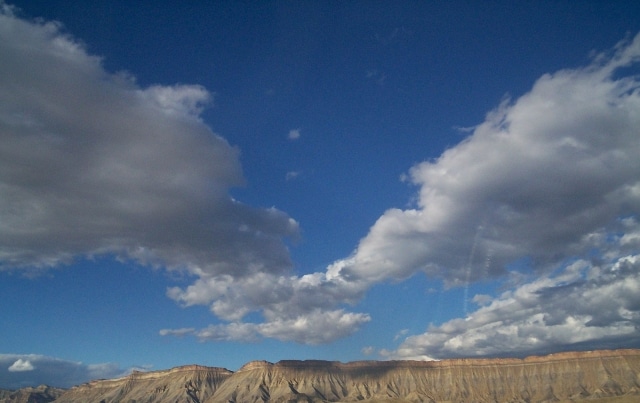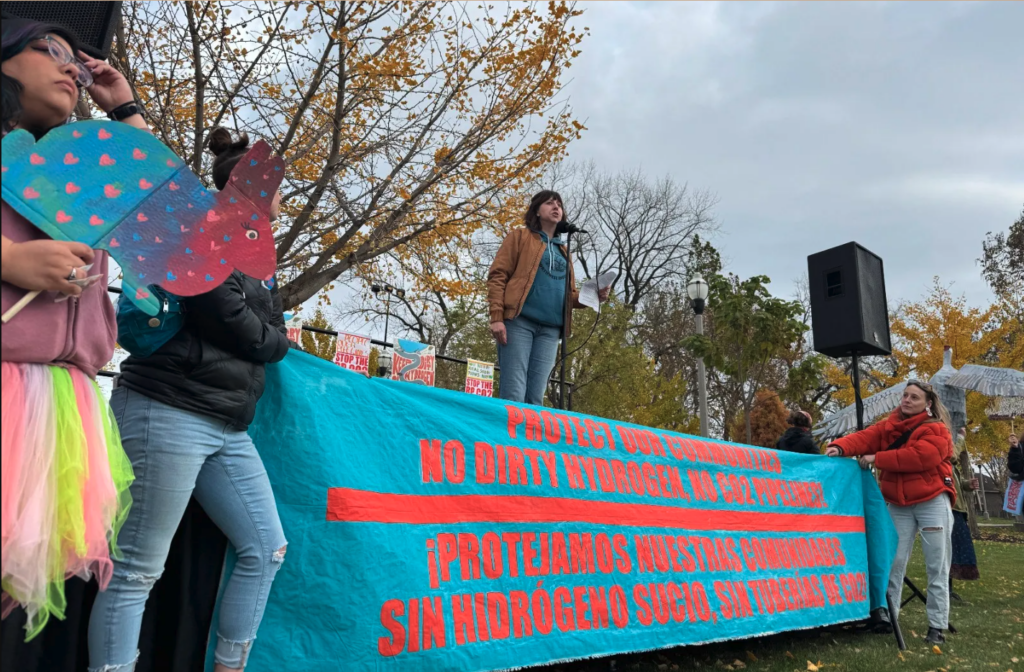Think only Canadians need to worry about tar sands extraction? Think again.
In October, U.S. Oil Sands, Inc. joined Kentucky-based Arrakis Oil Recovery as the second company to receive a permit to produce U.S. tar sands. The Utah Water Quality Board gave U.S. Oil Sands a permit to extract 2,000 barrels of oil per day from Utah’s tar sands reserves.
Despite its name, U.S. Oil Sands is actually a Canadian outfit based in Calgary, Alberta. The company currently holds leases on just over 32,000 acres in Utah’s Uintah Basin. U.S. Oil Sands’ mining will take place at PR Spring on the Colorado Plateau in an area called the Bookcliffs, which straddles the Utah/Colorado border.
U.S. Oil Sands’ water-and-energy-intensive extraction process involves first digging up congealed tar sands, then crushing them to reduce their size. The company then mixes the crushed sand with large amounts of hot water (at a temperature of 122-176°F) to loosen up and liquefy the tarry, oil-containing residue and separating it from the sand.
Next, coarse solids sink, are subsequently removed and considered waste tailings. Air is then bubbled through the remaining water-oil mixture, which makes the oil float to the top in what’s referred to as “bitumen froth,” in industry lingo. The froth is then deaerated, meaning all the air molecules are removed.
When it finally gets to this point in the production process, the mixture is still so thick it can’t be pumped through pipelines.
Thus, it undergoes even more treatment with a hydrocarbon solvent to reduce the viscosity and density of the sludge. Wastes from the process — which contain water contaminated with chemicals and unrecoverable oils — are called “middlings” and will be disposed of in surface tailings ponds and kept long-term.
Commercial Viability, Few Jobs, Utah Water Crisis
U.S. Oil Sands received the Utah Water Quality Board permit despite questions raised about its potential commercial viability and an ongoing water crisis in Utah and the U.S. southwest at-large.
According to a press release on the U.S. Oil Sands website, the company managed to obtain $81 million in financing in October 2013, and says the project is “fully funded.” U.S. Oil Sands makes this claim even though a March 2013 Record of Decision by the U.S. Bureau of Land Management cautioned investors that “this resource is not, at present, a proven commercially viable energy source.”
Additionally, as part of its PR offensive, U.S. Oil Sands is touting that the project will create 75 to 100 high-paying, steady jobs. But given the destruction inherent in tar sands mining, not to mention the climate impacts of this dirty oil, many are likely to view this corporate pitch of several dozen jobs as offensive on its face.
Further, excessive water usage in a drought-stricken west is another concern that citizens have with the project.
A letter written by the Utah Division of Oil, Gas and Mining said, “It is expected that the mine will use 116 gallons of water per minute on a 24-hour basis, which equates to approximately 180 acre-feet per year” and that a production rate of 2,000 barrels of crude a day will consume approximately 4,000 barrels of water per day.
Opposition to US Tar Sands Building
An organized citizens alliance has sprung up to try to block the U.S. tar sands project.
Members of Utah Tar Sands Resistance and Peaceful Uprising, Utah-based activist groups, crashed an annual gathering of U.S. Oil Sands’ investors in May 2013, disrupting the meeting with protests. The activists promised stiff opposition to the project.
Additionally, Peaceful Uprising went to the PR Springs demonstration site last year to conduct a nonviolent protest to disrupt the project. They walked onto the site carrying protest signs and banners, climbed on actively working track hoes, sat and stood in front of dump trucks and mining equipment and linked arms in a human chain to block the movement of graders and scrapers.
Co-founded by “Bidder 70,” Tim DeChristopher, Peaceful Uprising is considering organizing a “spring break” grassroots protest of the Utah tar sands project this year, inviting people to join them to learn community organizing and direct action skills first-hand. They will do the trip if enough people sign up.
Before it Starts is another group concerned that the project amounts to an environmental and climate disaster slated to irreversibly impact the Tavaputs Plateau area of eastern Utah. They did a “Tar Sands Roadshow” last spring, an educational presentation in which members will travel around Utah and western Colorado explaining the impacts of the tar sands project and how it will affect the nearby lands.
While much is yet to be clarified about U.S. Oil Sands intentions in Utah, one thing is for certain: U.S. tar sands development faces stiff grassroots opposition before the prospective developers even get started.
Photo Credit: Wikimedia Commons
Subscribe to our newsletter
Stay up to date with DeSmog news and alerts







